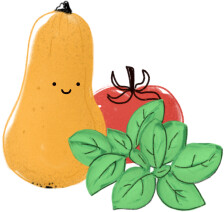Sakura, F1

Variety
Sakura, F1
Approved Data
created by steffen a. at 10.06.2023
Features
Color
rot
Resistenzen
platzfest
krankheitsresistent
Growth habit
hoch
starkwüchsig
Fruit shape
tastes very good
Geschmack
süß
frisch
Season Overview
Propagating
Planting
Harvest
J
F
M
A
M
J
J
A
S
O
N
D
Description
This F1 hybrid is very high-yielding and produces medium-sized cherry tomatoes of excellent flavor early. The fruits are burst-resistant and reach a weight of approx. 15 g. It also impresses with its vigorous growth and high resistance to typical tomato diseases. Very sweet and fresh, ideal for snacking.
F1 Hybrid
Not frost resistant
Growing tips
Germination temperature 20-24°C. Tomatoes require a lot of light, warmth, water and nutrients. They are grown from seed on the windowsill from March. The seedlings should be planted deep, up to the first leaf base, so that the root system is enlarged by additional lateral roots. Unlike most other crops, tomatoes should always be planted in the same place. The plants also need wooden/corrugated wire rods or a trellis to which you regularly tie them. This is the only way they can support the weight of the fruit. You should regularly break out the side shoots that form in the leaf axils. This is because they do not bear fruit and take away the plant's energy to concentrate on producing lots of fruit. Under-sowing with low-growing plants is a good option. - Watering tomatoes: Depending on whether you pre-sow or direct sow tomatoes, and depending on the location and variety, you will need to water your tomato plants differently often. Tomatoes can develop very deep roots that can even draw water from the groundwater. In this case, you hardly need to water them, if at all. Pay attention to the leaves, if they hang limp you should water your tomato plants. The soil dries out more quickly, especially in pots, raised beds and raised beds, so you will need to water them more often.
Details
Light requirement
Sunny
Water requirement
Moist
Soil
Light (sandy)
Nutrient requirement
High
Plant distance
65 cm
Row spacing
65 cm
Seeding depth
1 cm
Companion Plants
Asparagus
Basil
Bean (Broad bean / Faba bean / Field bean)
Bean (Dwarf bean)
Bean (Runner bean)
Broccoli
Brussels sprouts
Cabbage (Cabbage)
Cabbage (Savoy cabbage)
Carrots
Cauliflower
Celery (Celeriac / Celery root)
Celery (Celery)
Chili
Chives
Collard greens (Kale)
Collard greens (Tuscan kale / Dinosaur kale / Palm tree kale)
Common marigold
Cress
Garlic
Kohlrabi / German turnip / Turnip cabbage
Leeks
Lettuce (Lettuce)
Mint
Napa cabbage / Chinese cabbage
Onion
Onion (Spring onion)
Oregano
Pak Choi
Parsley
Pepper / Paprika
Radish
Radishes
Spinach (Summer)
Antagonistic Plants
Diseases
Grey mold
Early blight of potato
Pests
Thrips
Aphids
Spider mites
White fly